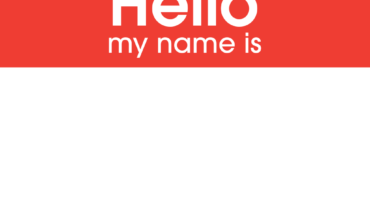Before Web 2.0, a little Web 101
A friend at a relatively large media corporation recently asked me to evaluate one of that company’s newspaper web sites. I removed any references to the specific paper/company not so much because I’m avoiding picking on them, but because most of the things I list I’ve seen elsewhere and I want more people at more companies to understand what to look for and why I feel they are important.
It’s very fun these days to obsess over various Web 2.0 technologies and how to integrate them into your existing site. But keeping up with the items listed below can do a lot to help companies grow and maintain readership.
Here goes nothing:
Improper copyright year in the footer – If the reader thinks you don’t know what year it is, it doesn’t do much to help credibility. I subsequently found this in a lot of places. When this extends into the second quarter of the year (as it now does as of this posting), it looks much worse than seeing it in Jan. and Feb.
Contact info without a means of communicating via the web — The site listed a collection of phone numbers for News tips, Classifieds, Display advertising, and Subscriptions. But there was no link to pages for these departments or Web-based email forms. This can frustrate the reader and cost your company a good chunk of change in the man hours needed to answer all those phone calls.
Articles with no comment functionality – I had the chance to integrate Topix.net into the iFocos site and was impressed with how easy the integration was. Such a service, or others like it integrated into the bottom of each article, could both enable reader feedback and expose the article to a wider audience. Also this wasn’t a matter of the site not encouraging any comments, as it’s blog had them fully enabled.
Registration requirement — I think the ESPN.com’s Insider approach is much better than preventing a user from seeing anything at all. If you’re going to require registration, I feel you should give the reader a tease of the first two or three grafs.
Hiding back-door views of your site — I’m a view-source kind of guy. I deleted some of the URL for a blog post, down to http://www.DOMAIN.com/CATEGORY/ and found a “test page” was exposed. This should probably be an inventory of all the company’s blogs. I also noticed that it said “Powered by Movable Type 3.16” Much has happened to Movable Type since version 3.16. Keeping on such an upgrade path can sometimes uncover new publishing, revenue and social networking opportunities for your company.
Make your headlines clickable – Not everyone instinctively knows to click on a “permalink.” Having both the word “permalink” and the headline clickable could result in increased page vews.
OK, I lied. I am now meandering into some more Web 2.0 territory. But don’t worry, none of this requires a computer science degree or anything …
Google maps indexing – I started playing with integrating Google maps into Movable Type recently for a client. I think this is an amazing opportunity for companies to explore. What I envision is a Google map that, when you click on a specific region, your last X number of articles, blog posts etc. that relate to that area show up.
Very targeted advertising could be integrated as well in the pop-up windows in the map. When users mouse over one of the markers on the map. Constructing such a map is no more complicated than creating specialized RSS feeds.
Go where the high school kids are — Why not create an account on MySpace that features links to your latest content? You could get thousands of potential young readers to be your paper’s “friend” and communicate with them on a level newspaper execs haven’t even let themselves ever dream about.
Recruit and host guest bloggers, and make them a real part of your publishing effort – Several news sites are warming up to the idea of “guest bloggers” as part of a citizen journalism effort. However, the areas these fine folks often post into is not always fully utilized by the newspaper company. Including small widgets showcasing “Latest headlines” or articles and features related to what the guest is blogging about seems to be a natural fit that would enhance the user’s experience with the guest blog and the company’s ability to reach a larger audience.
Speaking of reaching a larger audience … claim your blog on Technorati! – Once you’ve created these blogs for guests, take the next step and get them on Technorati’s radar. Make sure the ping settings in your publishing system are correct, and embed the little bit of HTML that enables visitors to make that blog one of their favorites on Technorati.
This is obviously just a small snapshot of opportunities and mistakes out there. We’d love to hear other from you. Comment below and get those gripes off your chest!
Chad Capellman is an occasional contributor and site constructor for iFocos. His LinkedIn profile can be viewed at http://www.linkedin.com/in/capellman
Chad Capellman is the web producer for wemedia.com. He has served in this capacity for every We Media conference even while working for other employers that included Boston.com, Eons.com and O’Reilly Media. He has applied many of the CMS, social networking and extended reach lessons he learned from five years at the Media Center at the American Press Institute and elsewhere to client web sites. He can be found at capellman.com



